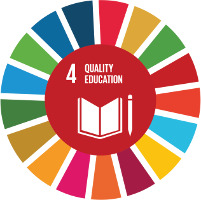Student-staff partnerships
Find out how to engage the student voice and work with students in partnerships for learning!

Why should we partner with students?
Student-staff partnerships can offer students a chance to see the behind-the-scenes mechanisms of the university, become actively involved in decision-making processes, or develop their employability capabilities. For staff, they offer insights into the student experience that may lead to enriched courses, programmes or activities.
According to KI Strategy 2030, we should engage with "students as co-creators in the design of educational programmes" so that we can "provide optimum conditions for student influence throughout the organisation. The students are our partners and thus share responsibility for influencing the design of educational programmes. KI shall facilitate this process.".

What are student-staff partnerships?
Partnering with students is a relatively new way of thinking about pedagogy in higher education, one that re-positions students as active collaborators in the diverse processes of teaching and learning, empowering students to be actively engaged in, and share the responsibility for, their own education.
Partnering with students in the development of the teaching and learning environment is a meaningful opportunity to develop important academic and transferable skills as well as foster a student-centred learning environment.
Student-staff partnerships are characterised as facilitating a relationship in which all involved – students, educators, support services staff, leadership, students’ unions, and so on – are actively engaged in and stand to gain from the process of learning and working together.
What can student-staff partnerships look like?
Student staff partnerships should seek to engage students in different projects and activities, including, but not limited to:
- Co-designing and contributing to the development of courses and curriculum;
- Co-designing and leading change around issues related to diversity, equity and inclusivity;
- Offering in-depth feedback around issues related to classroom culture and engagement;
- Helping design course materials such as assessments, content within Canvas sites, and other multimedia tools;
- Formatting and preparing assessments;
- Incorporating educational technologies, whether online or face-to-face;
- Designing and working on a Scholarship of Teaching and Learning (SoTL) project that can be developed over a term or year.
Whoever teaches learns in the act of teaching, and whoever learns teaches in the act of learning.

How can student-staff partnerships contribute to quality?
The article, "Five Propositions for Genuine Students as Partners Practice" (Matthews, 2017), provides a good primer on how to approach student-staff partnerships to enhance the quality of education. The five interrelated principles for good practice in partnership guide meaningful, power-sharing, and influential approaches across a diverse range of institutional contexts:
- Foster inclusive partnerships
Ideally, institutions will direct attention to the experiences of a diversity of students as the focus of partnership work and investigate how different populations can work together. - Nurture power-sharing relationships through dialogue and reflection
Power, whether discussed or left unspoken, is always a factor in student-instructor partnership interactions. - Accept partnership as a process with uncertain outcomes
Partnership is defined by the process of working together. As such, the outcomes of students and instructors engaging as partners may be unknown at the beginning of the joint endeavour, allowing for unique insights to be gained. - Engage in ethical partnerships
Engaging in partnership should be governed by ethical guidelines: How should we work together to ensure the equity of the work? Who benefits from the work and how? - Enact partnership for transformation
Transformation begins through our own active reflection and ongoing dialogue with others about who engages and why in partnership, what it means for higher education, and how we advocate for "students as partners" more widely at KI.
Research and examples
- International Journal for Students as Partners: Free, open-access journal documenting research and practice
- A Systematic Literature Review of Students as Partners in Higher Education
- International case studies of partnership in practice: Healey's webpage of resources including a guide, a hand-out and a bibliography on students as change agents
- Teaching and Learning Together in Higher Education: Reflective essays on partnership practices
- Engaging Students as Partners - A guide for faculty: A guide to developing productive student-faculty partnerships in higher education available through our library catalogue
- Co-designing a Community of Practice for Students as Partners in Partnership
Tell us about your student-staff partnerships!
Are you partnering with students and want to share your experience within the wider KI community? Contact us at UoL so we can showcase your good examples through our networks.
